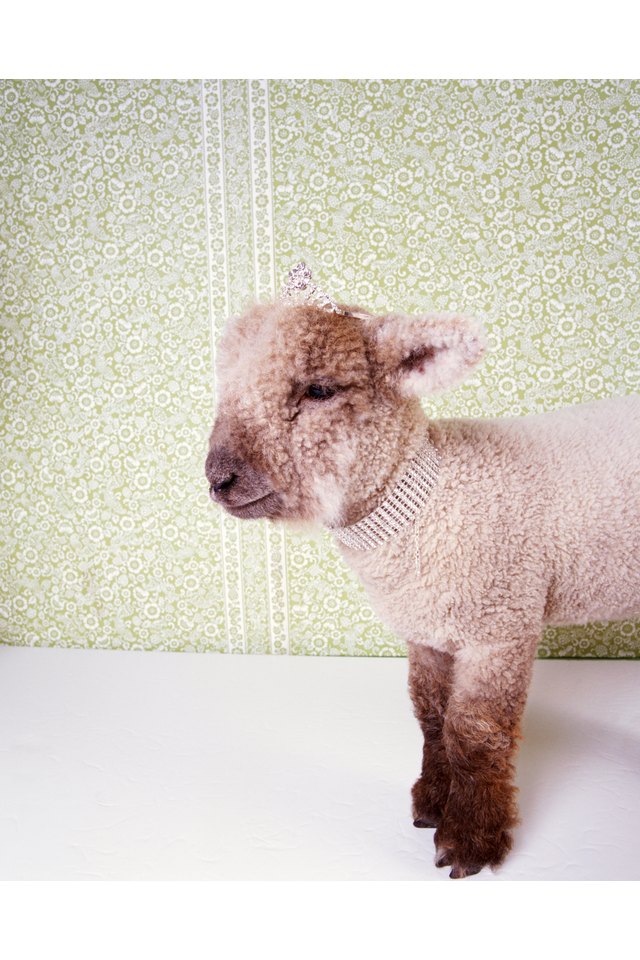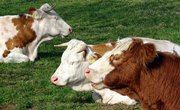
If the ewe dies, or if she produces more lambs than she can feed, you'll have to artificially rear the newborn. If you raise a lot of sheep, it's likely you'll have more than one lamb each season requiring hand-rearing. For best results, try to find a foster ewe with sufficient milk for the orphan. If that's not an option, purchase or build a "lamb bar," a self-feeding tank with rubber teats that enable the lambs to nurse.
Milk Replacer
It's important that newborn lambs consume colostrum, the initial milk produced by their mothers that provides the babies with crucial antibodies. It's a good idea to keep frozen colostrum on hand when you're expecting lambs. While ovine colostrum is preferable, bovine colostrum can be used if the former is unavailable. Lambs must consume colostrum within 24 hours after birth. After that, feed the lamb a milk replacer designed specifically for lambs, mixing only enough at a time for one day's feeding. In an emergency, you can use bovine or caprine milk replacer, but the fat, mineral and protein content is lower than is necessary for healthy lambs. For the first two days, orphan lambs must be fed every four hours.
Dry Feed
When the lamb is about 10 days old, begin providing him with commercial starter lamb feed, containing 18 percent to 20 percent protein. The lamb should also have a free-choice sheep mineral mix available. Lambs should always have access to fresh, clean water.
Abrupt Weaning
When your lamb consumes regular amounts of dry feed, he might be ready for weaning. The Virginia Cooperative Extension website recommends abrupt weaning by removing milk replacer from the lambing pen -- or ceasing to give it if you're bottle feeding -- at about the age of 15 to 20 days. The VCE advises that this method minimizes digestive upset and stress on the lamb. However, the lamb must weigh at least 20 pounds before abrupt weaning. That means a smaller lamb might be much older -- 4 to 6 weeks of age or more -- before you can wean him.
Familiar Surroundings
When abruptly weaning your lamb, it's important to leave him in familiar surroundings. Weaning him at the same time that he's put in a strange environment is just too stressful. While you might have bottle-fed a newborn lamb in your home, transition him to a safe, clean, warm pen at least several days before weaning. If you have multiple lambs, wean them together, as group weaning is less stressful. Expect your lamb to lose some weight in the week following the abrupt weaning. That is normal. Once the lamb reaches 40 pounds, you can feed him a lower-protein feed and allow him to graze on pasture grass.
References
Writer Bio
Jane Meggitt has been a writer for more than 20 years. In addition to reporting for a major newspaper chain, she has been published in "Horse News," "Suburban Classic," "Hoof Beats," "Equine Journal" and other publications. She has a Bachelor of Arts in English from New York University and an Associate of Arts from the American Academy of Dramatics Arts, New York City.



